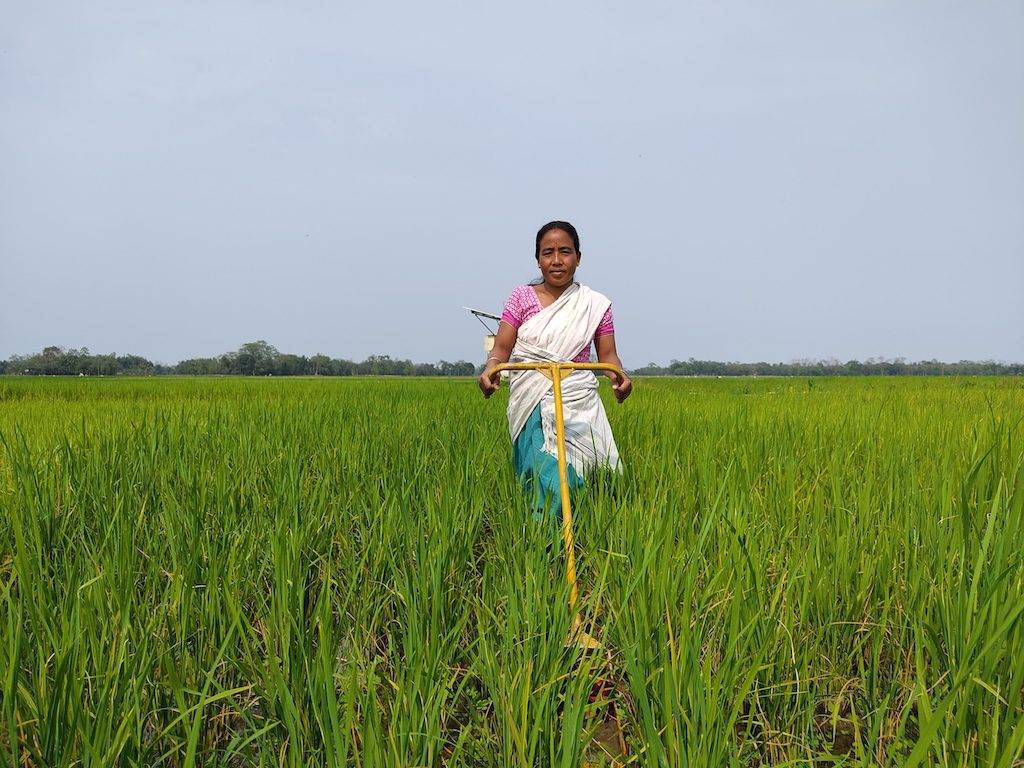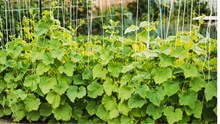
In Assam, rice is the most significant crop. It covers 2.54 million ha of the state's gross cropped area of 4.16 million ha and accounts for 96% of the state's total food grain production. Assam is well-known for its extensive rice genetic diversity.
Rice cultivation under a variety of agroecological settings has resulted in the formation of a variety of strains with specialized adaptations over time, thanks to natural selection and farmers' discretion.
The state's physical characteristics, geographical position, and historical reality have resulted in ethnic mobility and immigration, which has resulted in the introduction of several types of rice genetic stock over time.
The state has three rice-growing seasons due to agro-climatic variance, seasonal variations in temperature and rainfall, and agriculture's reliance on natural precipitation.
- Sali or winter rice (June/July – Nov/ Dec)
- Ahu or Autumn rice (March / April – June / July) and
- Boro or summer rice (Nov / Dec – May/June) .
Cropping System Approach:
Based on six zones namely Upper Brahmaputra Valley Zone, North Bank Plain Zone, Lower Brahmaputra Valley Zone, Hill Zone, Central Brahmaputra Valley Zone and Barak Valley Zone.
Rice Varieties:
Flood Tolerant Rice Varieties include BINA Dhan 11, Ranjit-Sub1, Bahadur-Sub1 and Swarna-Sub1.
Drought Tolerant Varieties include DRR Dhan 44 and DRR Dhan 46.
Premium Quality Rice Varieties include DRR Dhan 45, Bokul Joha, Keteki Joha (IET – 14390), Kola Joha, Joha (aromatic) rice, CR Dhan 909, CR Dhan310, RNR 15048 and Zinco Rice.
Best Management Practices:
- For Sali season in Transplanted Rice in Assam:
The varieties for various growing circumstances are mentioned below, along with a brief discussion of their features:
|
Variety |
Days to maturity |
Grain type |
Plant height (cm) |
Yield (t/ha) |
Salient features |
|
Swarna- Sub1 |
140-145 |
Medium bold |
100 |
5.5-6.0 |
Suitable for cultivation in lowland areas. Submergence tolerance up to two weeks However, if stagnation prolongs for more than a month over 25 cm water depths, tillering is drastically reduced. |
|
Ranjit- Sub1 |
150-155 |
Short fine |
115 |
5-5.5 |
|
|
Bahadur-Sub1 |
150-155 |
Medium Bold |
115 |
5-5.5 |
|
|
BINA Dhan 11 |
115-120 days during Sali season, may extend to 135 days in Boro season |
Medium Slender |
107-115 |
5.5-6.0/td> |
Suitable for medium shallow land. Submergence tolerance up to two weeks. Shorter duration may permit delayed transplanting/sowing, and timely maturity help escaping drought. |
- For Boro and early Ahu seasons in Assam:
The varieties for various growing circumstances are mentioned below, along with a brief discussion of their features:
|
Name of variety |
Days to maturity |
Grain type |
Plant height (cm) |
Yield (t/ha) |
Salient features |
|
BINA Dhan 11 |
135 in Boro and 125-130 in early Ahu season |
Medium slender |
107-115 |
5.5-6.0 |
Suitable for medium-shallow land, short to medium duration, suits for delayed transplanting/sowing and can help escaping drought |
|
DRR Dhan 44 |
120-125 |
Long slender |
100-105 |
5.0-5.5 |
Suitable for medium or upland, drought-tolerant |
|
Jayamati |
160-170 |
Medium slender |
120 |
6.5 |
Long duration variety, suitable for early nursery planting in November-December |
|
Dinanath |
160-165 |
Medium slender |
90-95 |
6.3 |
Moderately resistant to blast and sheath blight |
|
Swarnabh |
160-165 |
Medium slender |
85-90 |
6.2 |
Resistant to blast and moderately resistant to sheath blight |
|
Kanakalata |
160-165 |
Medium slender |
115-120 |
6.5 |
Long duration variety, suitable for early nursery planting in November-December |
Production Process:
- Pre-planting: Choosing the correct variety, creating a cropping calendar, and preparing the rice field for planting are all part of the pre-planting process.
Selecting rice varieties:
Variety selection should be based on high production potential, disease and insect pest resistance, weed competitiveness, good eating attributes, high milling percentage, and market appropriateness.
Quality of seed:
Seed of good quality minimizes the sowing rate required and creates robust, healthy seedlings, resulting in a more uniform crop with higher yields.
Crop Calendar:
A cropping calendar depicts the rice-growing season in its entirety, from fallow and land preparation to crop planting and management, harvest, and storage.
Preparation of Land:
A leveled and well-prepared field produces a uniform, a healthy crop that can compete with weeds, requires less water, and offers larger yields for less money.
- Growth: During the growth of the rice crop, important management variables should be considered. Planting methods, water, fertilizer, weeds, pests and illnesses, and harvesting are among them.
Planting:
Rice can be direct-seeded in the field or transplanted from a nursery using both dry and wet seeding methods. Transplanted crops usually take less time in the production field, but the total crop duration is 10–15 days longer. A well-prepared seedbed is required in both circumstances.
Management of water:
Rice is usually planted in bunded fields that are watered regularly for 7-10 days before harvest. Flooding is a good way to make sure there's enough water and keep weeds at bay. Lowland rice necessitates a large amount of water.
Management of Fertilizer:
The amount and kind of fertilizer used are calculated based on the premise that 1 ton of grain removes 15 kg nitrogen (N), 2–3 kilogram phosphorus (P), and 15–20 kg potassium (K) (K). These basic rates must be adjusted based on the soil type, cropping season, variety, ecology, crop state, prevailing weather conditions, and nutrient application efficiency.
Management of Weed:
Weeds directly compete with rice plants, reducing rice yield. Weed presence equals 1-kilogram grain loss per 1 kg dry matter of weeds. Within the first 20-50 days after crop establishment, weeds cause the most yield loss. Weeding following panicle initiation may be necessary to avoid weed seeds being shed for subsequent crops.
Pest and Disease control:
The most prevalent insect pests are rice hispa, yellow stem borer, rice bug, brown plant hopper, leaf folders, caseworm, rice gundhi bug, gall midge, and thrips. Sheath blight, bacterial blight, and blast are major diseases in Sali, blast and sheath rot in Ahu, and sheath rot and sheath blight in Boro.
The Integrated Pest Management (IPM) method is one of the most sustainable ways to handle pests and diseases in the field. IPM combines preventive and corrective strategies to protect pests from causing major damage while posing the least amount of risk or hazard to humans and desired environmental components.
Post Production:
Rice paddy undergoes post-harvest operations such as drying, storage, and milling after harvesting to ensure good eating quality and marketability.
Harvesting:
Harvesting the crop on time is crucial for maximizing yields and grain quality. Crops harvested too early will have a high proportion of unfilled and immature grains. When crops are harvested late, they are prone to shattering and bird attacks, resulting in considerable losses. Grain weathering degrades quality as well, resulting in breaking and downgrading due to poor grain color.
Drying:
Rice is typically harvested with a grain moisture content (MC) of 20 to 25%. (wet basis). Any drying delay, incomplete drying, or uneven drying results in a loss of quality and quantity.
Storing:
Rice is best stored as paddy because the husk protects against insects and prevents grain quality deterioration. A safe or hermetic storage method keeps insects, rodents, and birds out of the grain while also keeping it from getting damp after drying.
Milling & Processing:
White rice is produced by milling rice paddy to remove the husk and bran covering. When rice has a moisture percentage of 13–15 percent, it is best milled. Grain temperatures should not exceed 45°C during the operation. A good mill removes the husk (20%), the bran or meal (8–10%), and leaves 70% of the rice as white rice. Irrigated rice should have 60% white rice as head rice (unbroken, white kernels), whereas rainfed rice should contain 40–50% white rice as head rice.
Market Intelligence:
The market value of milled rice is governed by a variety of physical and chemical qualities, as well as consumer preferences, which vary both within and between nations.
Source: Rice Knowledge Bank, Assam
https://www.rkbassam.in/
(Also read: Choose The Varieties Of Paddy According To Your Region & Get Maximum Yield)

















